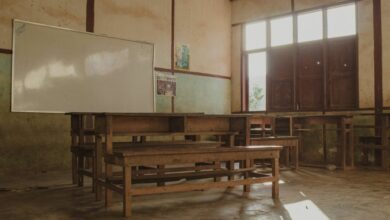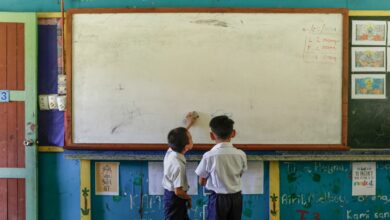When my brother was in Form 3, one of his classmates broke his leg. To accommodate him, the entire class moved from the third floor to the first. Why? Because the upper floors weren’t accessible. That moment made me realize something: our schools aren’t designed for everyone.
Inclusive education in Malaysia isn’t just about policy documents or mission statements. It’s about ensuring every student, regardless of ability, can access and thrive in school without unnecessary barriers. Right now, that isn’t the case.
More than ramps and elevators
Accessibility isn’t just about installing a ramp or an elevator. It’s about designing schools that support everyone, from classrooms to corridors to learning materials.
Take school floors, for example. They should be smooth and free of obstacles that could trip up students, especially those who are blind. Ramps and handrails help wheelchair users move independently, but accessibility also means fostering an inclusive learning environment where all students can participate without limitations.
For many students with disabilities, the challenge isn’t just keeping up with lessons; it’s feeling like they belong.
For many students with disabilities, the challenge isn’t just keeping up with lessons; it’s feeling like they belong. Imagine trying to follow along in class, but it feels like watching a YouTube tutorial on 2x speed with no captions… frustrating, right? That’s the reality for students who don’t receive the right support in school.
Progress, but are we moving fast enough?
Malaysia has taken steps forward in ensuring inclusive education with policies like the Zero Reject Policy, which ensures no child is denied an education due to disabilities or special needs. Schools are expected to provide suitable learning environments for all students.
However, implementation varies. Some schools do a fantastic job, while others barely make an effort. Inclusive education depends heavily on individual school leadership and teacher commitment, making it an unreliable system. Without proper funding, training, and oversight, many students with disabilities continue to struggle.
Our government has introduced programmes to help bridge the gap. Special Education Schools cater to students with hearing, vision, or learning challenges. The Special Education Integration Programme (SEIP) and the Inclusive Education Programme (IEP) aim to support students with disabilities in mainstream schools. These initiatives matter, but they’re only the beginning of a much longer journey.
A game changer for deaf students
One school in Penang is leading the way. Sekolah Menengah Kebangsaan Pendidikan Khas Persekutuan has made history as the first school in Malaysia where deaf students can sit for the SPM exam without communication barriers. That’s huge!
How did they do it? By investing in specialized programmes and ensuring teachers are proficient in sign language. This proves that with the right support, inclusive education isn’t just possible; it’s transformative.
With the right support, inclusive education isn’t just possible; it’s transformative.
Inclusive education in Malaysia should be the norm, not the exception. Right now, students with disabilities have to work twice as hard just to get the same opportunities and that’s not fair.
Building a culture of inclusivity
Since 1990, the Kiwanis Down Syndrome Foundation (KDSF) has been making a real difference through early intervention programmes. By working with children as young as two months old, they prepare them for mainstream education, setting the stage for lifelong learning.
But beyond academics, KDSF teaches something just as important, empathy. When students learn alongside peers with different abilities, they develop understanding and acceptance. Think about Disney’s Inside Out; we connect more deeply when we learn to understand each other’s experiences. That’s what true inclusivity looks like.
Skills that matter
Bangsa Ria Day Training Centre takes a different approach, focusing on practical life skills for individuals with disabilities. Their tailored programmes cover everything from puzzles and math to motor skills like using utensils.
One of their coolest features? The Snoezelen Room, a multi-sensory space designed to stimulate and calm students. Spaces like these help children with disabilities gain independence and confidence, which are just as crucial as academic success.
Moving Toward a Brighter Future
The future of inclusive education in Malaysia is promising, but there’s still a long road ahead. Progress is happening, but is it happening fast enough? For real change, we need more than policies; we need commitment, funding, and community support.
As National Education Day and Hari Guru Malaysia approaches in May, let’s take a moment to recognize and celebrate the work being done to break down barriers in education. But let’s also address the elephant in the room: Are we doing enough? How can we push for more inclusive schools? And most importantly; how do we ensure that every child doesn’t just survive in school but thrives?
Because at the end of the day, education shouldn’t be an exclusive invite-only party. It should be for everyone.




